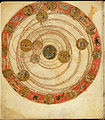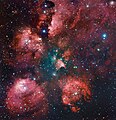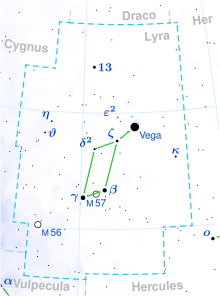Portal:Astronomy
|
The Astronomy Portal
IntroductionAstronomy is a natural science that studies celestial objects and phenomena. It uses mathematics, physics, and chemistry in order to explain their origin and evolution. Objects of interest include planets, moons, stars, nebulae, galaxies, meteoroid, asteroid, and comets. Relevant phenomena include supernova explosions, gamma ray bursts, quasars, blazars, pulsars, and cosmic microwave background radiation. More generally, astronomy studies everything that originates beyond Earth's atmosphere. Cosmology is a branch of astronomy that studies the universe as a whole. Astronomy is one of the oldest natural sciences. The early civilizations in recorded history made methodical observations of the night sky. These include the Egyptians, Babylonians, Greeks, Indians, Chinese, Maya, and many ancient indigenous peoples of the Americas. In the past, astronomy included disciplines as diverse as astrometry, celestial navigation, observational astronomy, and the making of calendars. Professional astronomy is split into observational and theoretical branches. Observational astronomy is focused on acquiring data from observations of astronomical objects. This data is then analyzed using basic principles of physics. Theoretical astronomy is oriented toward the development of computer or analytical models to describe astronomical objects and phenomena. These two fields complement each other. Theoretical astronomy seeks to explain observational results and observations are used to confirm theoretical results. Astronomy is one of the few sciences in which amateurs play an active role. This is especially true for the discovery and observation of transient events. Amateur astronomers have helped with many important discoveries, such as finding new comets. (Full article...) General images -The following are images from various astronomy-related articles on Wikipedia.
This is a Featured article, which represents some of the best content on English Wikipedia..
Vega is the brightest star in the northern constellation of Lyra. It has the Bayer designation α Lyrae, which is Latinised to Alpha Lyrae and abbreviated Alpha Lyr or α Lyr. This star is relatively close at only 25 light-years (7.7 parsecs) from the Sun, and one of the most luminous stars in the Sun's neighborhood. It is the fifth-brightest star in the night sky, and the second-brightest star in the northern celestial hemisphere, after Arcturus. Vega has been extensively studied by astronomers, leading it to be termed "arguably the next most important star in the sky after the Sun". Vega was the northern pole star around 12,000 BCE and will be so again around the year 13,727, when its declination will be +86° 14′. Vega was the first star other than the Sun to have its image and spectrum photographed. It was one of the first stars whose distance was estimated through parallax measurements. Vega has functioned as the baseline for calibrating the photometric brightness scale and was one of the stars used to define the zero point for the UBV photometric system. (Full article...)Did you know -
More Did you know (auto generated)
WikiProjectsSelected image -Gamma-ray burst progenitors are the types of celestial objects that can emit gamma-ray bursts (GRBs). GRBs show an extraordinary degree of diversity. They can last anywhere from a fraction of a second to many minutes. Image is Eta Carinae, in the constellation of Carina, one of the nearer candidates for a hypernova. Astronomy News
June anniversaries
Astronomical eventsAll times UT unless otherwise specified.
TopicsSubcategoriesSelect [►] to view subcategories
Things you can do
WikibooksThese books may be in various stages of development. See also the related Science and Mathematics bookshelves.
WikijuniorAssociated WikimediaThe following Wikimedia Foundation sister projects provide more on this subject:
Discover Wikipedia using portals Shortcuts to this page: Astronomy portal • P:ASTRO Purge server cache |










.jpg/120px-IAU_2006_General_Assembly-_Result_of_the_IAU_Resolution_Votes_(iau0603g).jpg)


.jpg/120px-Outreach%2C_one_of_the_most_rewarding_jobs_(4798622790).jpg)
















.jpg/120px-Ioannis_Bayeri_Rhainani_Vranometria_1661_(84132460).jpg)


.jpg/120px-Ioannis_Bayeri_Rhainani_Vranometria_1661_(84132277).jpg)




